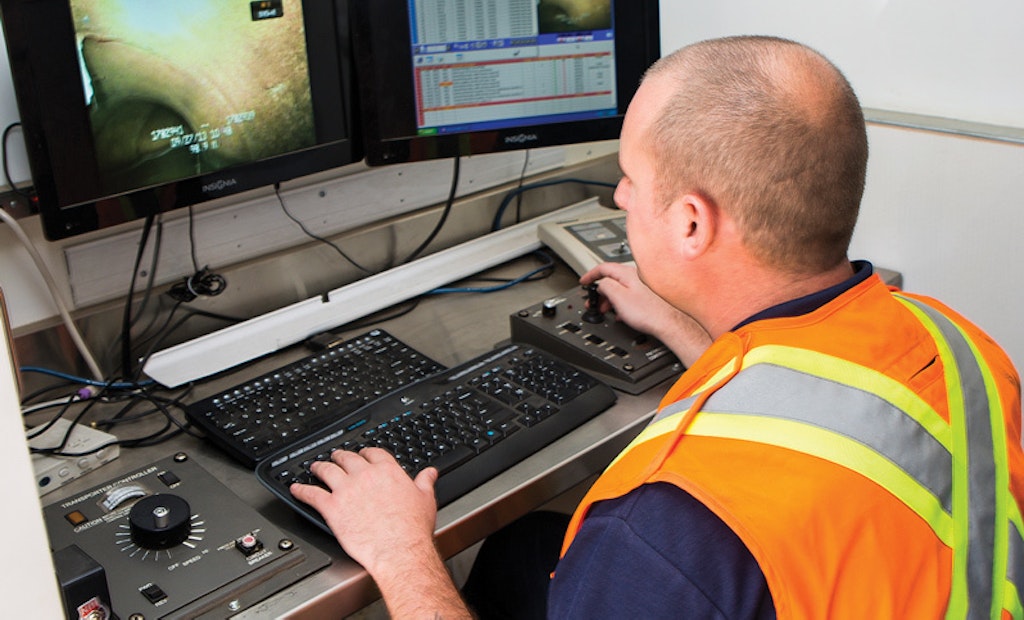Interested in Cleaning?
Get Cleaning articles, news and videos right in your inbox! Sign up now.
Cleaning + Get AlertsThe Regional Municipality of York in Ontario, Canada, is experiencing rapid growth. As its sewer system and waste treatment infrastructure expand to accommodate an increasing population, the region is committing itself to efforts to inspect and remediate its trunk sewer system.
York Region borders the Regional Municipality of Peel on the west, Toronto on the south and the Re-gional Municipality of Durham on the east. York was originally a county, but was transformed into a regional government in 1971. A council made up of members elected from its towns and cities governs the region.
The sewer and water system is operated by the region’s Environmental Services Department, which is responsible for trunk sewer lines, transmission mains, water treatment and wastewater treatment. Local area municipalities within the region retain responsibility for their own local sewer and water operations.
Cooperation is key
Cooperation with its neighbors is an important part of sewer and water operations. York Region shares a common trunk sewer line and wastewater treatment plant with Durham Region, and water is supplied to the southern portion of York Region by both Toronto and Peel.
York Region is currently nearing the end of a second inspection contract, part of a multiyear program designed to perform inspection and condition assessment of prioritized segments of the trunk sewer over 10 years. It’s the first time the region has taken such a programmed approach to a survey of the trunk system.
“Best practices are to inspect an average of about 10 to 15 percent of the linear system per year,” says Ben Pressman, program manager, Asset Inspections, Operations, Maintenance & Monitoring with York Region’s Environmental Services and program manager for the current phase of trunk sewer inspection. “However, for the upcoming three-year contract, we’re targeting approximately 15 percent of the system annually.”
Andrews Infrastructure of Ottawa was the consulting engineering firm chosen for both inspection contracts for the trunk sewer system. Andrews Infrastructure offers infrastructure management and environmental engineering services and specializes in the assessment and management of large diameter trunk sanitary sewers, including major contracts in Toronto and Peel.
The first contract, which took place in 2010, involved more than 15 miles of trunk sewers across York Region and more than six miles of the 96-inch shared York-Durham Sanitary Sewer trunk in the City of Markham. The current contract, which began in 2011, involves more than 62 miles of sewers and includes inspection and condition assessment of about 1,000 maintenance holes and chambers.
In 2010, the firm also completed a simultaneous three-year contract to develop an inspection protocol, assessment criteria and a comprehensive maintenance hole inspection and condition assessment program and database.
Sewers screened for inspection
The trunk sewers to be inspected are selected using a screening process that begins with inventory and historical information on the pipe segments. Likely inspection targets are scored, ranked and nominated to an inspection candidate list. Environmental Services then creates a consensus list of the actual inspection candidates, which cover a broad area of the region.
“The consultant is assessing each segment of pipe and providing a condition rating of one through five,” Pressman says. “The higher the number, the worse the condition; five represents a prediction of imminent failure, while a one means there is no structural defect.”
The contracts are strictly for inspection and assessment, with the consultant reporting and recommending courses of action to York Region, along with suggested repair approaches and possible budgets for remediation.
“We’re like a car mechanic who never actually does any repairs, but rather tells you where to go to get it fixed,” says Mark Andrews, principal of Andrews Infrastructure.
The pipes being assessed cover a wide range of sizes, from as little as 18 inches to as much as 9 feet in diameter.
“On both contracts, we’ve been using a pan-and-tilt CUES camera mounted on either a floating rig or a robot crawler modified to work in the York Region system and environment,” says Andrews. “Since this contract is part of the first full-out assessment of the entire trunk sewer system, our recommended approach has been to stay high-level. Laser profiling and other more sophisticated assessment tools have their place, and we’ll use them where it makes sense, but these tools would probably be better suited to another round of targeted inspection once the region has collected reports on the entire system.”
The inspection contractor adds sonar capability to the crawler when there is deeper sewage flow in larger diameter pipes, to provide more complete, overall condition assessment.
Sewer velocity a challenge
“The biggest challenge with the York Region sewers is their high velocity,” says Andrews. “When you get up to the north end of the City of Aurora, you can see the CN Tower 30 miles away on the lakeshore in Toronto. That gives you an idea of the steep slopes on some of the south-flowing transmission mains. In a gravity-fed sewer system the flow is moving so quickly that you don’t want your camera equipment to get away from you.”
When the contractor experiences fast flowing sewage in large-diameter pipe, the camera is placed on a floating rig to inspect that section.
“The floating rig is large and steady enough that it remains stable in turbulent flow at high velocity,” Andrews says. “We use a strong umbilical cable, place the rig in the pipe upstream, then let it out at a measured pace using a winch as it goes with the flow. That becomes a little more challenging when there’s a long distance between entry points. In some cases, we’ve had to use a length of umbilical cable measuring a little under a mile. The strength of the cables is critical because if we encounter a blockage, we’ve still got to be able to pull the unit back against the flow to get it out.”
Having worked on numerous contracts in the Greater Toronto area, Andrews also compares the condition results to that of other neighboring systems.
“Prior to inspection, you may not be used to seeing certain defects in the pipe wall,” Andrews says. “If you know the systems of your neighbors share those same conditions, it gives you better context.”









